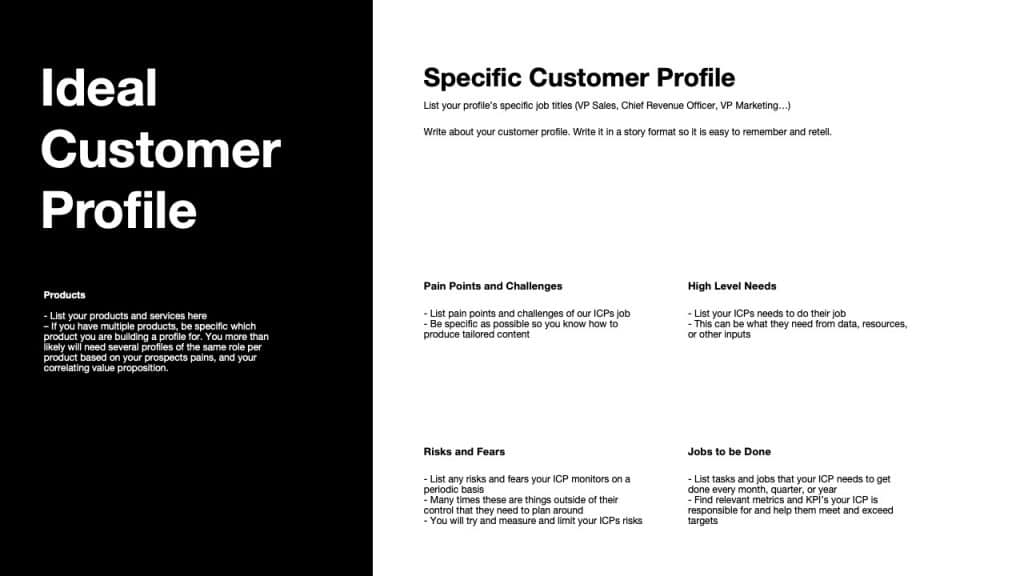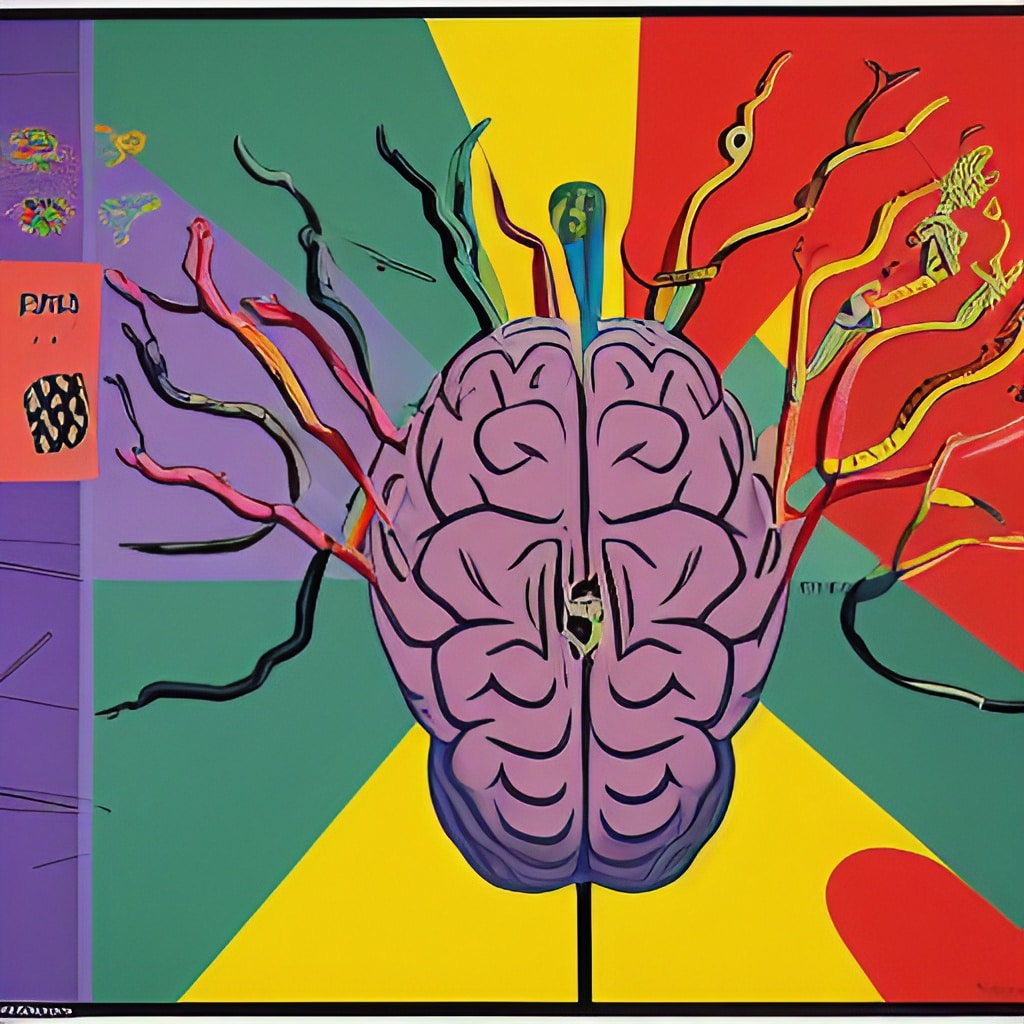Creating an ideal customer profile (ICP) is essential for B2B sales and marketing. By understanding your target market, you can create content and messaging that resonates with them, making it more likely that they’ll become customers. This article provides templates and examples and explains the steps to creating an ideal customer profile, including who to target, what to consider, and how to reach them.
What is an Ideal Customer Profile?
An ideal customer profile is a fictional representation of your perfect customer. It includes customer data like demographics, behavior patterns, and motivations. This information helps you understand potential customers so you can build a successful sales strategy and increase customer lifetime value.
Creating an ideal customer profile can seem daunting, but it’s an essential part of your marketing strategy that guides your sales team on how to reach the most valuable customers. By taking the time to create an ideal customer profile and buyer personas for current customers and future customers, you’ll be able to better understand your target audience so you can effectively create account-based marketing campaigns.

Characteristics of an ideal customer
When creating an ideal customer profile for your sales and marketing teams, you’ll want to consider who you’re targeting. There are a few factors to include when building plans on how to reach your target accounts.
The size of the company
The size of a company can have a huge impact on how you approach your ICP. If you’re targeting enterprises, they may require higher volumes of products or services and longer contract terms, whereas small businesses may be looking for lower-cost solutions with shorter commitments. Understanding the size of your ideal customer can help you create a profile that is tailored to your ideal customer’s needs.
Location
Location can be important when creating an ideal customer profile. Depending on where your target customers are located, you may need to tailor your messaging and approach to effectively reach them. For example, if you’re targeting customers in a foreign market, you may need to consider adjusting your language and cultural references to better resonate with them. Understanding the locations of your ideal customers can help you tailor your ideal customer profile for maximum success.
Industry
The industry of your ideal customer can be an important factor when creating an ideal customer profile. Depending on the industry, you may need to adjust your messaging or approach to effectively reach them. For instance, if you’re targeting customers in a highly regulated field like healthcare, you may need to take into account regulatory requirements when creating content or messaging. Understanding the industry of your ideal customers can help you create a profile that is tailored to their needs.
Budget
Budget is another important factor when creating an ideal customer profile. Knowing your ideal customer’s budget will help you tailor your messaging and approach to effectively reach them. By understanding the budget of your ideal customers, you can create content that resonates with their needs and helps them make informed decisions. Additionally, understanding the ideal customer budget can help you set realistic expectations and create pricing that works for everyone. With this information, you can tailor your ideal customer profile to make sure it’s within their budget.
How to Create an Ideal Customer Profile
Defining your ideal customer profile is an essential step in understanding your target market and how to best serve your customers. Your ICP should be a list of your 10 best existing customers, noting how much they’re paying you and how much value they’re getting from using your solution. Your customer success team can help you to identify and refine ideal customer profiles, as well as provide insights on how to best reach them.
How to Find Common Attributes Among Your Best Customers
When you take the time to brainstorm and research your existing customers, you’ll be able to see patterns emerge more easily. Once you’ve identified the most important attributes, you can use these criteria when scoring new leads to prioritize sales efforts and focus on buyer personas that are more likely to convert. By following these steps, you’ll be well on your way to defining your ICP!
Research individual customer
When researching individual customers, it’s important to look at both personal and business attributes. For example, you should ask yourself what the ideal customer looks like in terms of job title, industry or vertical, company size (number of employees), geography, and budget. Additionally, you should consider market trends such as the general demand for your product or service, the competition in that market, and any existing customer objections. By researching these attributes, you’ll be able to determine which customers are most ideal for your business.
Identify common traits
Once you’ve researched individual customers, you can start to identify common traits among ideal customers. Look for patterns in company size, industry, job titles, geographic location, and budget. Additionally, you can look for trends in the types of customer objections that come up frequently and how they are addressed. By identifying these common traits, you’ll be able to create a detailed ideal customer profile that will help guide your sales process.
Prioritize the most important attributes
When creating your ideal customer profile, it’s important to prioritize the most important attributes. This will help you focus sales efforts on customers that are more likely to convert and generate value for your business. For example, if your ideal customer has a budget of over $10,000 a year, then you should prioritize leads with this attribute when making sales calls. Additionally, if your ideal customer is in a certain industry or geographic area, you should prioritize those leads as well. By prioritizing the most important attributes of ideal customers, you’ll be able to focus sales efforts on the most lucrative prospects.
Ideal Customer Profile Template
Using this ICP template, you can easily create a list of ideal customers and prioritize them according to their most important attributes. Additionally, this template can help you identify common traits among ideal customers so that you can quickly score and prioritize new leads. By using this ideal customer profile template, you’ll be able to focus your sales efforts on prospects that are most likely to convert and help you generate value for your business.
Here’s how to create an ideal customer profile for your sales team:
Define your buyer persona
Your buyer persona is a semi-fictional representation of your ideal prospect. To create a buyer persona, you’ll need to gather data about your current customers, including their demographics, interests, pain points, and goals. You can gather this information through surveys, interviews, and customer data analysis.
Once you have this information, you can start to build out your buyer persona by creating a fictional character that represents your ideal customer. Be sure to give your persona a name and include as many details as possible.
Identify their needs and wants
It’s important to identify a prospect’s needs and wants to determine if they are ideal customers. To do this, you should research their background, interests, goals, and challenges. Additionally, you should consider any customer objections that may arise during the sales process. By understanding your ideal customer’s needs and wants, you’ll be able to tailor your sales pitch and address any potential objections. This will help you close more deals and increase your overall sales success.
Discover pain points and challenges

Discovering a prospect’s pain points and challenges is essential to creating an ideal customer profile. Pain points are areas of dissatisfaction that customers experience with the current market offering, while challenges are obstacles they face when trying to solve those problems. By researching your ideal customer’s pain points and challenges, you’ll be able to identify solutions that they need to find success. Additionally, understanding a customer’s pain points and challenges will help you tailor your sales pitch to their specific needs and better address any objections they may have. This will increase the likelihood of closing more deals with ideal customers.
Uncover their high-level needs
Uncovering a prospect’s high-level needs is essential when creating an ideal customer profile. High-level needs refer to the overall goals and objectives that ideal customers are trying to achieve, such as increasing profits or boosting efficiency. To uncover these needs, you should research your ideal customer’s industry and their competition. Additionally, you can ask them and key stakeholders about their goals during sales calls or customer interviews. Understanding a customer’s objectives will help you create a tailored solution that meets their exact needs and position yourself as the ideal provider for their business. This will ultimately increase your chances of closing more ideal customers.
Understand their behavioral attributes, risks, and fears

When creating an ideal customer profile, understanding a prospect’s behavioral attributes, risks to their role and company, and fears are essential. Behavioral attributes refer to how customers interact with the product or service you provide. The risks they face can be related to their job security as well as their company’s current or future outlook. Lastly, understanding a customer’s fears will help you address any objections they may have during the sales process. By understanding these three elements, you’ll be able to tailor your sales pitch using psychographics to their specific needs and make them feel valued and appreciated as ideal customers. This will ultimately increase your chances of closing more deals with ideal customers.
Document how they achieve long-term success
When creating an ideal customer profile, it’s important to understand how customers will achieve long-term success. Documenting the steps they need to take in their decision-making process to reach their goals is essential for success. This includes understanding the role you can play in helping them succeed as well as what actions they should take on their own. Additionally, researching current trends and industry updates to ensure that your ideal customer stays ahead of the curve is essential. By helping your ideal customer achieve long-term success, you will demonstrate your commitment to their success and increase the chances of closing more ideal customers. This will ultimately lead to greater success for both parties.
Examples of Ideal Customer Profiles
As you create an ideal customer profile, it’s important to look at real-world examples so that you can get a better understanding of what a successful ideal customer looks like. There are several examples of ideal customer profiles below. If you don’t see which one you are looking for, contact me and I’ll help you create one to fit your ideal customer and the points you should cover to maximize your sales pipeline.
